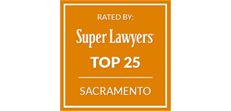What Are Economic Damages in California?
If someone else causes an accident that injured you in California, you could be eligible for damages. Damages is the legal term for financial compensation available for the injuries and other losses caused by someone else’s wrongful acts. There are two main categories of damages available in a personal injury lawsuit in California: economic and noneconomic damages. Economic damages are the most common.
What Is an Economic Damage Award?
An economic damage award is a monetary recovery given to you for a defendant’s wrongful or careless acts. It is money the defendant must pay to make you whole again, or to restore you to the financial state you were in before the accident occurred. If someone contributed to your injury, that party may owe you financial compensation for the direct financial losses you suffered as a result of the accident. These are known as economic losses – also called specific or tangible losses.
What Are Examples of Economic Damages?
A serious accident in California can lead to many economic or financial losses for you and your family. A car accident, for example, could result in expensive medical costs and property damage. Any monetary losses your family suffered due to the defendant could become part of your personal injury claim.
Common examples of economic damages are:
- Medical bills
- Lost wages
- Property repairs
- Travel costs
- Legal expenses
- Out-of-pocket expenses
Noneconomic damages, on the other hand, are the intangible losses you suffered in an accident, such as physical pain, emotional suffering and loss of consortium. It is important to discuss your case with an attorney before accepting an insurance settlement, as an attorney can help you create a comprehensive list of all of your past and future losses. Then, your lawyer can help you prove these losses using clear and convincing evidence.
How Can You Prove Economic Damages?
Before an insurance company will pay you economic damages, you or your attorney must prove that you suffered the losses you are claiming. The burden of proof in a personal injury case is a preponderance of the evidence; this is lower than the burden of proof beyond a reasonable doubt. It is only necessary to prove that the defendant more likely than not gave you compensable losses.
Evidence that may help you prove economic damages in a personal injury lawsuit includes:
- Medical bills
- Photographs and videos
- Witness statements
- Pay stubs
- Letters from your employer
- Invoices
- Tax documents
- Receipts
- Auto mechanic repair estimates
- Expert testimony
An attorney in Sacramento can help you collect evidence proving your specific and general losses. Then, your lawyer can help you argue for fair financial compensation using aggressive negotiation strategies.
How Are Economic Damages Calculated?
Economic and noneconomic damages are calculated in different ways. To determine an economic damage award, the courts will look at the proof your attorney has provided and add up the actual monetary costs you have suffered as a result of the defendant’s actions.
The courts will come up with a precise number based on your bills and receipts. Your lawyer may also have to estimate your future economic damages if you have a long-lasting or permanent injury, such as future physical therapy or rehabilitation costs. To calculate a noneconomic damage award, on the other hand, the courts may or may not use a specific method. Although there are equations available to help a jury calculate intangible damages, it is up to a jury whether or not to use them.
The financial compensation you are entitled to for economic and noneconomic losses depends on the facts of your specific case. Common factors that can alter the value of your personal injury case include the severity of your injuries and how much insurance coverage is available.
For individualized legal advice about your economic damages in a personal injury lawsuit, consult with an attorney in California today.

















